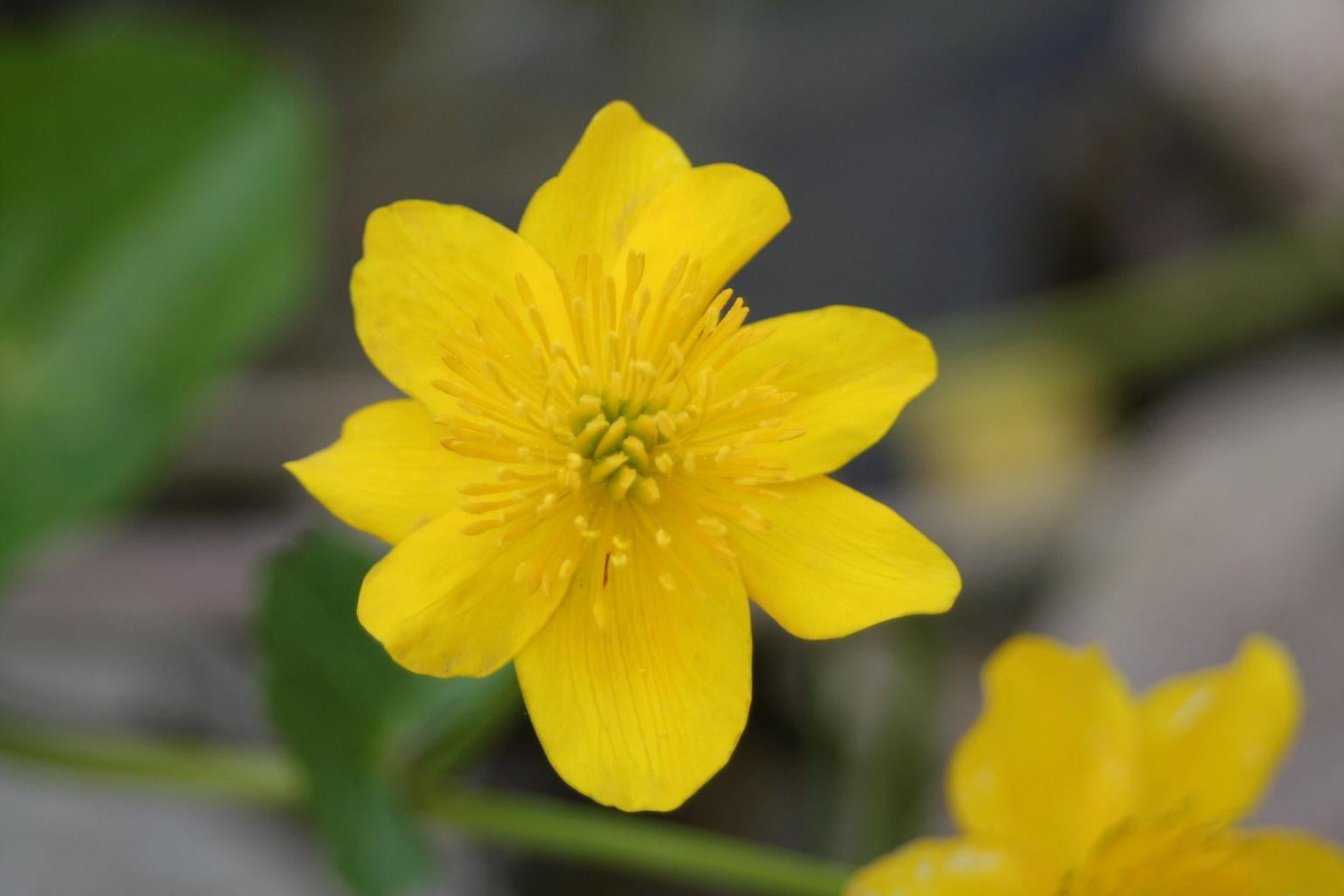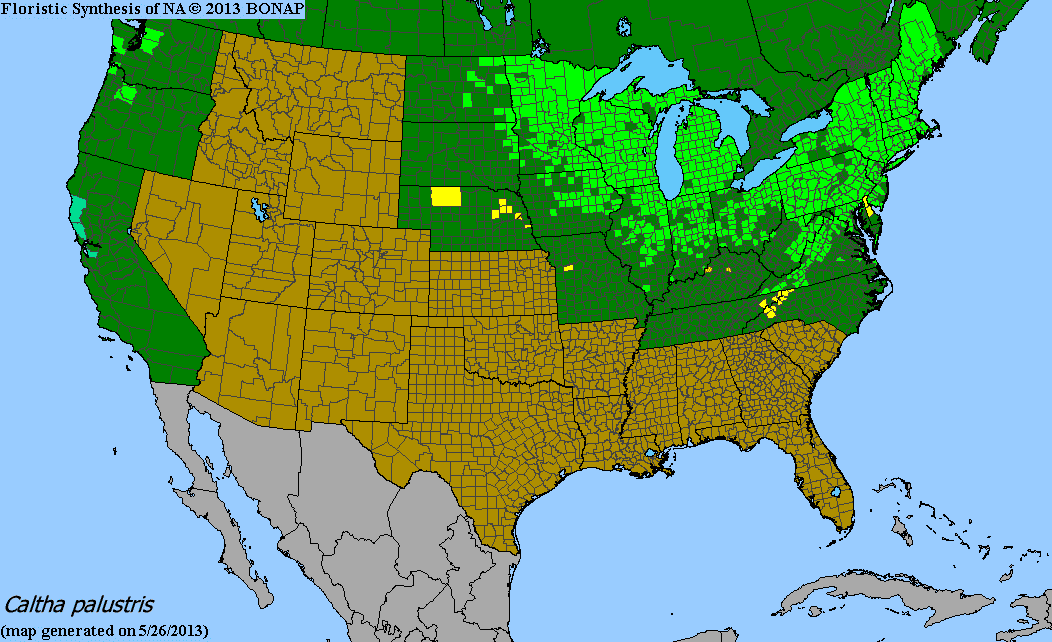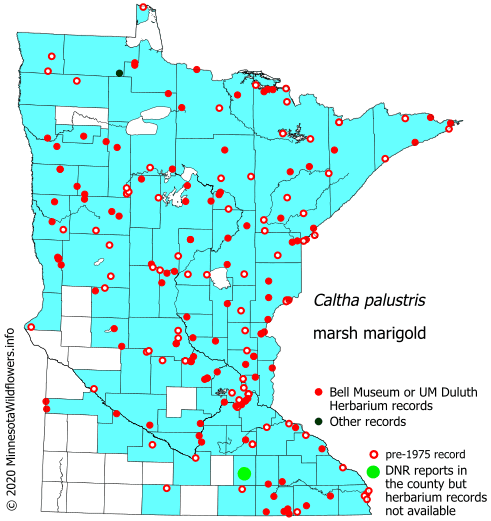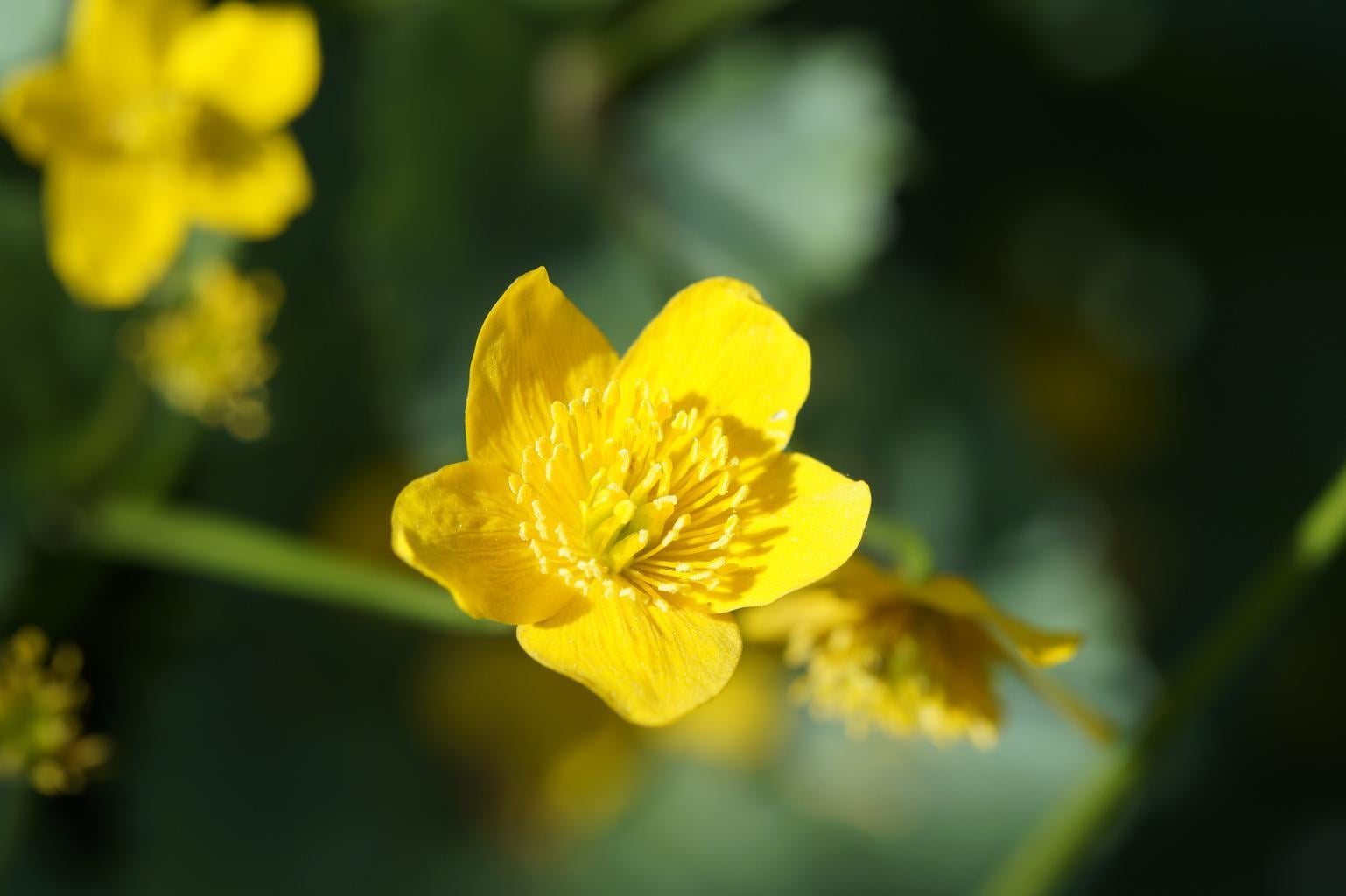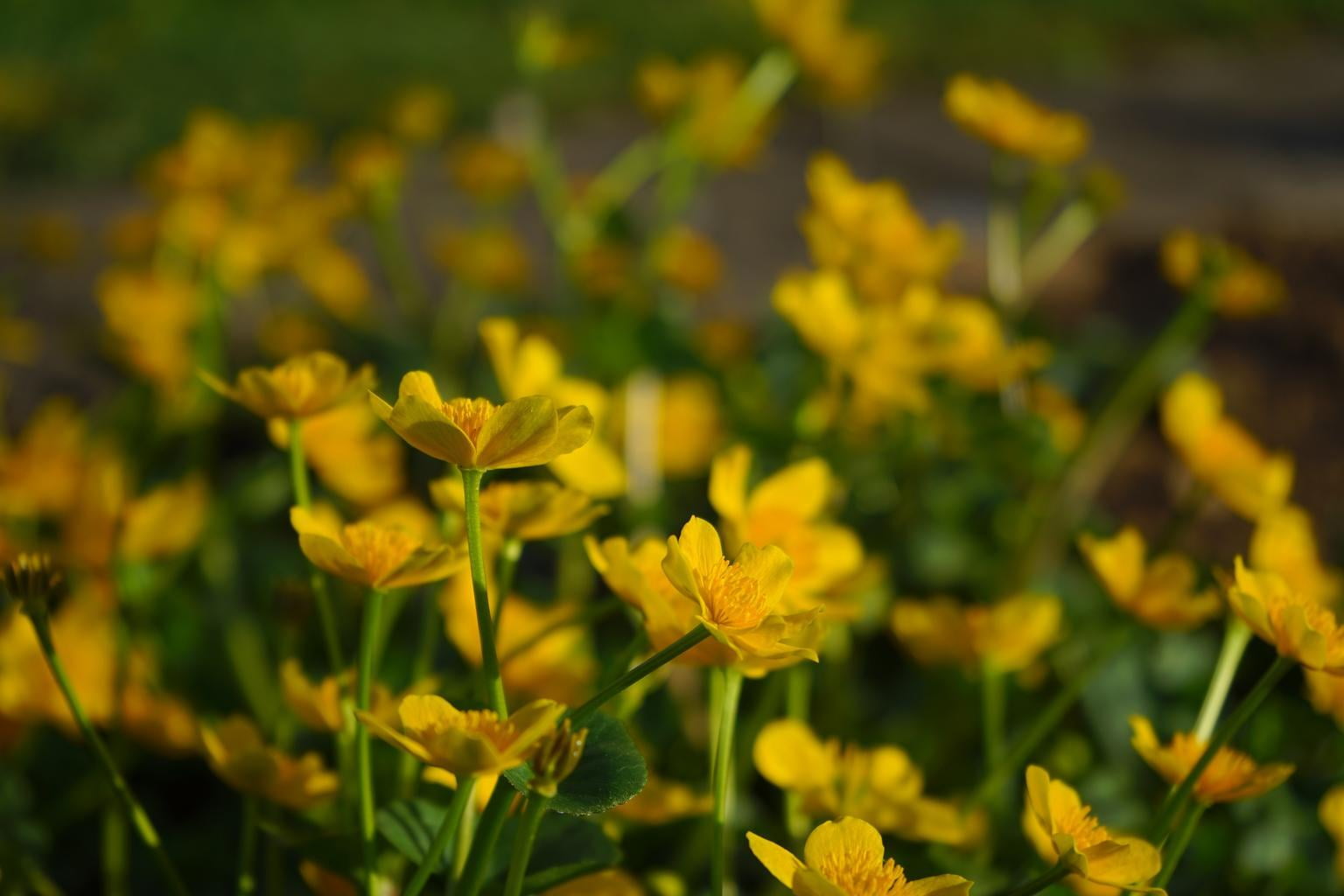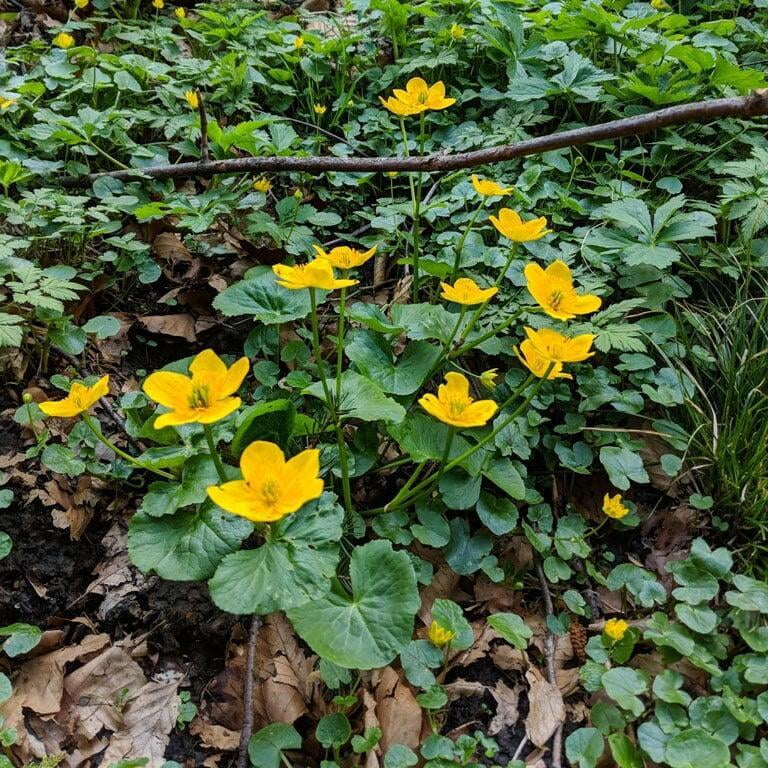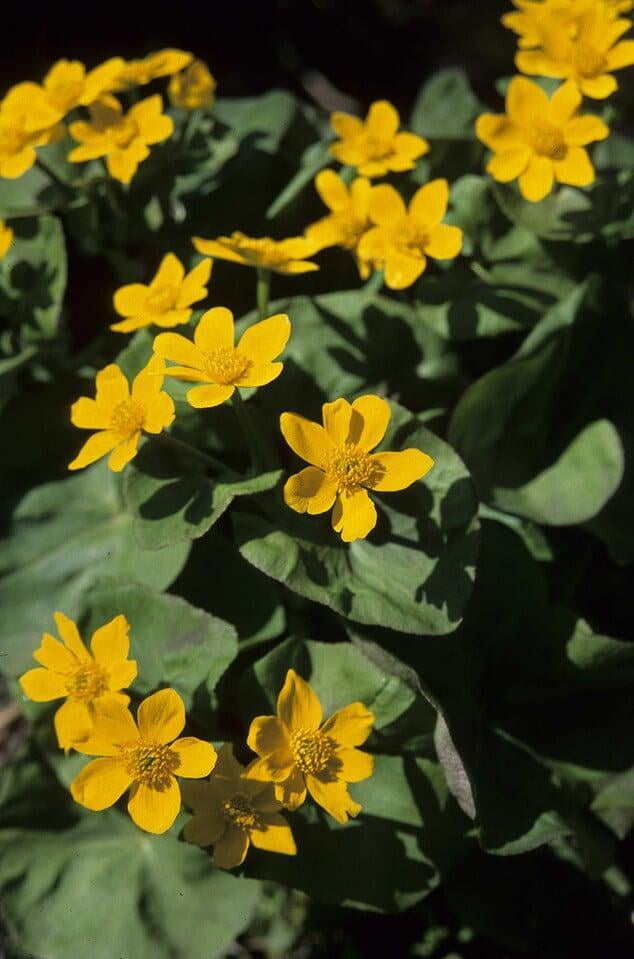Caltha palustris
Marsh marigold Description:
Caltha palustris, commonly known as marsh marigold, is a perennial herbaceous plant that belongs to the Ranunculaceae family. It is native to wetlands, marshes, and riverbanks in the temperate regions of North America.
The plant typically grows to a height of about 30-50 cm (12-20 inches) and forms clumps of dark green, shiny, heart-shaped leaves. In the spring, it produces bright yellow, bowl-shaped flowers that are about 2-5 cm (1-2 inches) in diameter. The flowers have five to nine petal-like sepals and numerous stamens, giving them a simple and delicate appearance. The flowers are pollinated by bees and other insects.
Marsh marigold is a water-loving plant and is often found growing in or near ponds, streams, and wetlands. It is a hardy plant that can tolerate cold temperatures and often blooms early in the spring when many other plants are still dormant. The plant prefers full sun or partial shade and moist to wet soils.
In addition to its ornamental value, Caltha palustris has been used for centuries as a medicinal plant. Its leaves and roots have been used in traditional herbal remedies to treat a variety of ailments, including liver problems, rheumatism, and gout. The plant has diuretic properties and has been used to treat fluid retention and edema.
Overall, Caltha palustris is an attractive and useful plant that is valued for its beauty and medicinal properties.
Native Range:
Marsh marigold is a across most of Minnesota and more broadly it is concentrated in the upper Midwest and Northeastern United States.
Standard Plant Information:
Plant Height: 8" - 24"
Bloom Time: April - May
Preferred Habitat: Does well in part shade to full sun. Often found wet soil, swamps, ditches, shorelines, and wet woodland.
Sowing:
For most homeowners, the best option is to scatter seed on the ground by hand broadcasting at a minimum of 16-64 pls ounces per acre. For even coverage, we recommend that you broadcast seed in perpendicular rows across the site to ensure even coverage.
You’ll want to broadcast any grass seed first, which will get raked into the soil lightly. Next, it is ideal to mulch the area lightly with either a clean (no seed) straw or preferably with our native Little Bluestem straw, sold at our retail garden centers. After a light mulching is complete, now it’s time to broadcast your native wildflower seeds, which should not be raked into the soil. A good rain or watering is sufficient to cover the seed.
Planting:
Simply dig a hole in the soil slightly larger than the plant’s roots. Ensure that the soil line of the plant is maintained during the transfer (i.e. the plant should be at the same level with the ground as it was in the pot). Pack any loose dirt back around the plant and make sure you water it well the same day to ensure it has the best chance of survival.

